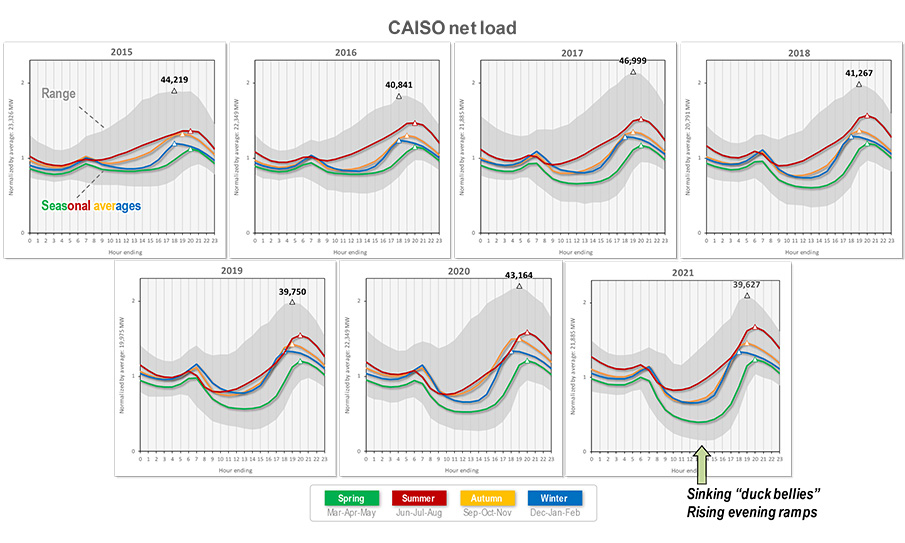The increasingly widespread and strongly desired growth in the use of renewables for the production of electricity, implicates the need to review the management of energy systems, taking into account the characteristics, the variability and availability of the primary sources used, such as the sun, wind and water.
The recent publication of the Terna report on the State of the Electricity System 2022 and the investment trend in renewable sources lead to a reflection on the relationship between industry and the energy market. It confirms the transition that the entire electrical system is going through at the moment.
The idea came from the 2021-2022 comparison of the daily curves on the Residual Load, consisting of non-renewable energy sources programmable in production, shown in figure 11 p. 20.

The shape of the Terna chart resembles the “duck curve”, a definition used by their colleagues from the state of California (CAISO) to describe the downward trend of the Residual Load (or Net Load), generated by the increase in photovoltaic load during the daytime.

The drop in rainfall over the last 2 years has also contributed to this behaviour especially in the areas where there are hydro power stations, which has triggered a reduction in the modulation capacity of hydroelectric storage over the national territory.
Some analysts are even talking about “Canyon Curve”, because the expected increase in photovoltaic energy will transform the graphs into relatively gentle downhill and uphill curves, at the beginning of the day and at the end towards evening (the back and neck of the poor duck), into real “precipices”, similar to those excavated by the erosion of the waters of Colorado in the sedimentary rocks of Arizona.
In the scenario Fit For 55, for the stabilization of the dynamics induced by non-programmable renewables, Terna has therefore programmed about 95 GWh of new hydroelectric and electrochemical storage capacity up to 2030, of which over 70 are large-scale in southern Italy. This will allow for the development of photovoltaic energy in areas with greater production capacity. This would mean triple the current accumulation capacity of 53 GWh, leading to a total capacity of between 15 and 25% of the national daily consumption.
Power systems and the entire distribution network must become more flexible and be able to interact using different energy resources in the most functional and intelligent way possible.
This progress has a direct impact on each energy manager. In fact, FUTURA and CO-VER Power Technology, which is an operator of cogeneration plants, have to implement innovative management models. These models combine a decrease in plant production with an increase in demand from the network during low-cost hours thereby generating a greater economic and environmental benefit for the customer. We have therefore taken up the challenge and invested in redesigning our assets to anticipate new scenarios that appear increasingly likely and closer to hand.
Sources:
- Terna, Stato del Sistema Elettrico, Piano di Sviluppo 2023.
- www.caiso.com – http://www.caiso.com/about/Pages/Blog/Posts/Our-Evolving-Grid.aspx
- www.iea.org – https://www.iea.org/commentaries/more-of-a-good-thing-is-surplus-renewable-electricity-an-opportunity-for-early-decarbonisation
- IEA, The California Duck Curve, IEA, Paris https://www.iea.org/data-and-statistics/charts/the-california-duck-curve, IEA. Licence: CC BY 4.0
